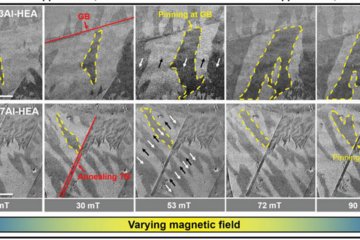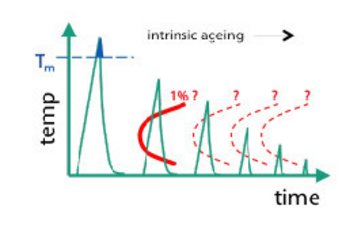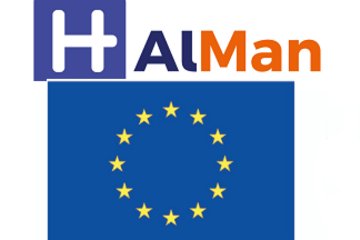All genres
181.
Talk
Deformation induced dislocation interactions near martensite-ferrite phase boundaries. MRS Fall Meeting 2011, San Francisco, CA, USA (2011)
182.
Talk
Deformation-induced geometrically necessary dislocation evolution in dual-phase steel. 20th EBSD Conference, Düsseldorf, Germany (2011)
183.
Talk
Micro-mechanical characterization and quantification of ductile damage. Seminar talk at Institut für Umformtechnik und Leichtbau, Dortmund, Germany (2010)
184.
Poster
Site-preferential recrystallization and nano-precipitation to achieve improved mechanical properties. MRS Fall Meeting 2016, Boston, MA, USA (2016)
185.
Poster
Stress and Strain Partitioning in Multi-Phase Alloys Analyzed by Full Field Crystal Plasticity Simulations and In-Situ Experiments. MSE 2014, Darmstadt, Germany (2014)
186.
Poster
Origin of Beta to Omega Transition Induced by {211}<111> Shear in Ti–Nb-based Alloys. MSE 2014, Darmstadt, Germany (2014)
187.
Poster
Correlative Study of Carbon Segregation in Low Carbon Martensitic Steels by Combined EBSD, ECCI and APT Analysis. MSE 2014, Darmstadt, Germany (2014)
188.
Poster
Cyclic γ reversion enabled microstructure and mechanical property restoration in TRIP-maraging steels. MSE 2014, Darmstadt, Germany (2014)
189.
Poster
Stress and Strain Partitioning in Multiphase Alloys: An Integrated Experimental-Numerical Analysis. Winter School 2014, Research Training Group 1483,
Karlsruher Intitut f. Technologie (KIT), Karlsruhe, Germany (2014)
190.
Poster
ω phase accommodated nano-twinning mechanism in Gum Metal: An ab initio study. 3rd International Workshop on Physics Based Material Models and Experimental Observations: Plasticity and Creep, Cesme/Izmir, Turkey (2014)
191.
Poster
Graded, ultrafine-grained, ferrite/martensite dual phase steel: a case study for damage-resistant microstructure design. Physics based materials models and experimental observations, Cesme Turkey (2014)
192.
Poster
Stress and Strain Partitioning in Multiphase Alloys: An Integrated Experimental-Numerical Analysis. Materials to Innovate Industry and Society, Noordwijkerhout, The Netherlands (2013)
193.
Poster
Novel methodology for high resolution strain mapping to high deformation levels. Euromat 2013, Sevilla, Spain (2013)
194.
Poster
Size effects on mechanical stability of metastable austenite. GDRi CNRS MECANO General Meeting on the Mechanics of Nano-Objects, MPIE, Düsseldorf, Germany (2013)
195.
Poster
Micro-testing of isolated single/bi-crystals of complex alloys with ECCI & δ-EBSD imaging. 4th International Workshop on Remote Electron Microscopy and In Situ Studies, Lisbon, Portugal (2013)
196.
Poster
Stress and Strain Partitioning in Dual Phase Steels: Statistical Analysis of Numerical Results. Materials to Innovate Industry and Society, Noordwijkerhout, The Netherlands (2012)
197.
Poster
Heterogeneous Crystal Plasticity Simulations Using Pseudo-Spectral Methods. Materials to Innovate Industry and Society, Noordwijkerhout, The Netherlands (2012)
198.
Poster
Experimental-Numerical Analysis of Stress and Strain Partitioning in Dual Phase Steel. 10th Materials Day, Joint workshop of the Materials Research Department (MRD) and the IMPRS-SurMat, Bochum, Germany (2012)
199.
Poster
Microstructural analysis of strain rate sensitivity of dual-phase steel. Materials Science Engineering (MSE) 2012, Dramstadt, Germany (2012)
200.
Poster
Using a "Virtual Laboratory" to Derive Mechanical Properties of Complex Microstructures. Materials to Innovate Industry and Society, Noordwijkerhout, The Netherlands (2011)











